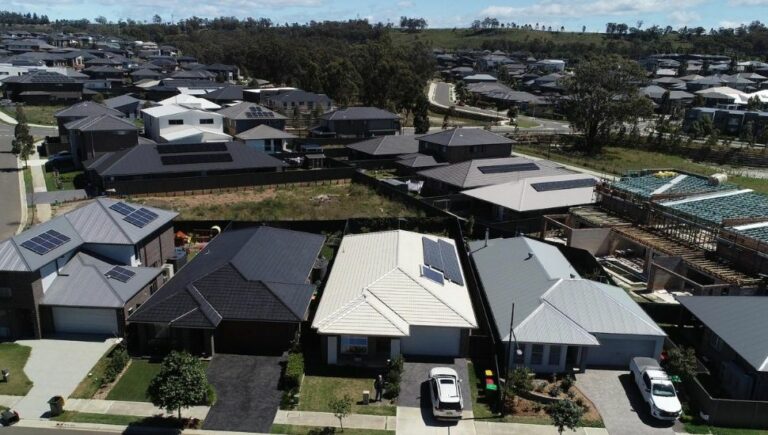As part of its push to reach net-zero emissions by 2050, the NSW government has pledged to ban dark roofs and deliver more sustainable housing.
New research from the University of Sydney found that Sydney temperatures could drop by up to 2.4C if dark roofing was scrapped across the city.
Researches say record-high summer temperatures in Sydney’s Western and outer suburbs are partially a consequence of urban design, with a notable lack of green spaces that create a “heat island” effect.
Heat in homes is exacerbated by dark roofs, which absorb significantly more heat than lighter-color materials, affecting livability and requiring more energy to stay cool in summer.
“This would have an enormous impact on the urban heat island effect in our city, and I will be asking the Department of Planning to implement this as part of our Net Zero Cities approach,” Planning Minister Rob Stokes told the Committee for Sydney.
“There are no practical reasons why we shouldn’t be ditching dark roofing on new homes permanently to ensure that future communities of Sydney’s west don’t experience the urban heat that many communities do now.”
The study, which is being replicated across every major Australian city, will bolster the Commonwealth’s policy on more environmentally sustainable cityscapes in a bid toward net-zero emissions.
Love Music?
Get your daily dose of metal, rock, indie, pop, and everything else in between.
Professor Mat Santamouris, from UNSW’s School of Built Environment, said that ridding the city of dark roofing would reduce energy consumption by 30 percent, and in some circumstances, 40 percent.
“We need to say goodbye to the trend of having dark roofs that not only attract and retain heat and raise ambient street temperatures but lead to astronomical electricity bills because of the need to cool homes,” says minister Rob Stokes. “A small investment now will reap enormous dividends in the future.”
Stokes also announced an upgrade to Baix, the key tool used in NSW to assess the water and energy efficiency of housing. He hopes to boost the standard Nationwide House Energy Rating Scheme (NatHERS) for new residential developments, by using products such as thermal glass, insulation, and solar panels, water tanks, and plantings.
“We’re proposing to raise the current requirement for new residential dwellings from 5.5 stars to 7 stars,” he said.


































